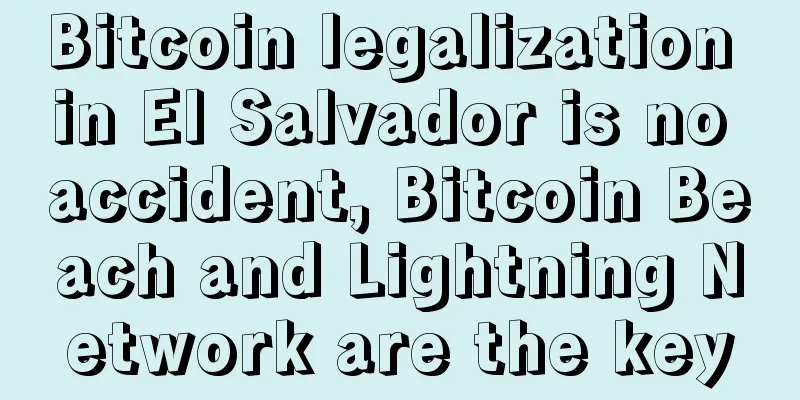Research report from the Bank for International Settlements: How to implement regulation in the crypto space?

|
Author | Rodrigo Coelho, Jonathan Fishman and Denise Garcia Ocampo Compiled by Chen Yiming Source: Lianxin However, in most cases, effective implementation is still in the making. The state of oversight can therefore be best described as a work in progress, and this study is a snapshot at this stage. As jurisdictions finalize regulatory norms, key questions remain as to who and what activities should be included in the regulatory scope. The regulatory treatment of crypto-asset service providers depends on the types of crypto-assets these providers offer and the risks posed by the activities in which the firms engage. National authorities have chosen different criteria to classify different crypto-assets and have defined different activities that fall within the regulatory scope. Despite this heterogeneity, authorities are largely consistent in applying the basic principle of “same business, same risk, same rules”. The question depends on the assessment of national authorities as to which risks posed by crypto-assets and related activities should be addressed by regulators, whether these risks should be addressed by existing regulators, or whether there are regulatory gaps that need to be addressed. For gaps in AML/CFT regulation, currently implemented international standards, especially those issued by the Financial Action Task Force (FATF), can provide a solid foundation for AML/CFT compliance and guidance. Another challenge involves determining the essential economic functions of the financial services provided by financial service providers, especially when new instruments and business models do not fit into existing definitions. In general, most regulators are in open dialogue with the private sector and offer “onboarding” services to service providers. The main difficulty for regulators and the private sector in defining which natural or legal persons should be regulated for crypto assets is that the private sector in the crypto industry generally has a limited level of knowledge of AML/CFT regulatory requirements compared to what exists in traditional financial services, although crypto asset providers are ultimately obligated to these regulations. Although there is still much work to be done in terms of implementation, most jurisdictions have or are conducting national-level AML/CFT risk assessments. The main conclusion of these assessments is that the risks associated with crypto-assets are relatively high or have grown over the past few years, and such assessments should provide a strong basis for calibrating regulation and supervision. However, some assessments could use more in-depth methodologies, while others are not made public. If jurisdictions do not publish the key conclusions of their assessments, they lose an opportunity to educate the public, especially in such a new and evolving field. In addition, the lack of publicly available risk assessments may make AML/CFT risk decisions (such as customer risk scoring) more difficult for regulators and the private sector. The number of enforcement actions remains limited and has been taken in only a very small number of jurisdictions, so there is room for improvement. This is partly because the regulatory rules in most jurisdictions are relatively recent. In jurisdictions where such actions have been taken, the sanctioned conduct often involves unregistered activities or fraudulent elements. Given the importance of open and transparent enforcement actions and their role in helping AML/CFT systems mature, this area requires further attention. The Travel Rule is a binding obligation of the Financial Action Task Force (FATF), but it is not effectively enforced by most jurisdictions. Many jurisdictions question whether they can reasonably impose the Travel Rule on cryptoasset providers until there are technological solutions that make compliance less onerous, as SWIFT has done for correspondent banks. Some authorities surveyed also expressed concerns that if these technological solutions are not universally accepted or interoperable, compliance with the Travel Rule will remain a burden. However, other jurisdictions are implementing the rule now because it is currently feasible, albeit with difficulties. Those jurisdictions that have implemented the rule can provide some examples for those that have not yet achieved this. Peer-to-peer (P2P) transactions present challenges, but views on their scale vary. Some jurisdictions consider these transactions to be equivalent to cash exchanges and believe that the risks they pose are within the risk tolerance of the Financial Action Task Force (FATF) standards and national regulation. This is particularly true where authorities want P2P transactions to be limited in number, as most of these assets pass through crypto asset vendors before they can be used. The availability of ledger analysis tools that track these assets has also partially assuaged some authorities' concerns about P2P transactions, as it shows that transparency can be achieved. However, there are also those who believe that the comparison with cash is not quite appropriate and are concerned about the disintermediation that P2P transactions may represent. In addition, the obvious risk of P2P transactions is that the scale will grow rapidly, especially as crypto assets become more widely accepted. The potential risks posed by P2P transactions seem to indicate that additional risk mitigation measures may be needed. Regardless, many jurisdictions need a clearer assessment of the risks to guide future decisions. There are also opportunities to adopt new approaches that take full advantage of the inherent data-rich nature of the crypto-asset industry. Authorities are committed to supporting responsible financial innovation while ensuring adequate regulation. New regulatory approaches and technological applications can help achieve this balance and maximize resources. This will enable them to make more intensive use of data and technological tools, such as blockchain analytics, to improve the effectiveness of regulatory frameworks. Effective supervision through international cooperation is key to this industry. The inherent cross-border nature of crypto assets and the uneven global implementation of international standards in this field make international cooperation a key component of effective supervision. This is especially necessary considering that this is a brand new industry. National supervisors have the necessary legal powers and channels for international cooperation, but the actual use of these powers and channels is another area that needs improvement. source: https://www.bis.org/fsi/publ/insights31.pdf (This article is the author’s own opinion and does not represent the position of Lianxin.) |
>>: Nebula National Tour Hangzhou Station concluded successfully!
Recommend
Men with thin lips tend to be more ruthless and selfish.
Everyone knows that people with thick lips are ge...
"Blockchain" technology enters Wall Street, 2 million banking jobs will evaporate in ten years
Banks such as JPMorgan Chase and Citigroup have s...
Which palm lines are destined to be poor?
In modern society, everyone hopes to have as much...
Ear size
Ear fortune telling illustration Ear size Big ear...
The mouth of your face can tell whether you have enough food and clothing
In physiognomy, the mouth is called the cashier, ...
Multiple U.S. agencies jointly investigate Bitcoin money laundering case involving arms dealers
Arms dealer Benjamin James Cance was arrested for...
Marriage line bifurcation diagram 13 diagram analysis
How to interpret the diagram of the forked marria...
Binance received $2 billion in investment and surrendered to the UAE
The rumors about "Binance seeking to sell&qu...
Why do ears get hot?
Ear fortune telling: Why do ears get hot? If the ...
What kind of palm lines are best for men? Good luck in love but bad luck in money
A good palm line actually indicates good fortune ...
Are women with square foreheads destined to divorce? Analysis of the facial features of women who are prone to divorce
Marriage is a lifelong commitment. Don’t make a d...
SWIFT's authority has been repeatedly challenged. Does blockchain technology pose a threat to it?
Recently, the blockchain and payment industries h...
What is the face of a woman with a sunken uterus?
I believe many people are familiar with the Palac...
The length of your fingers reveals your personality traits
The length of your fingers reveals your personali...
Mining Insights: The ups and downs of the mining journey of the flagship S9
In the field of Bitcoin mining, there is probably...









